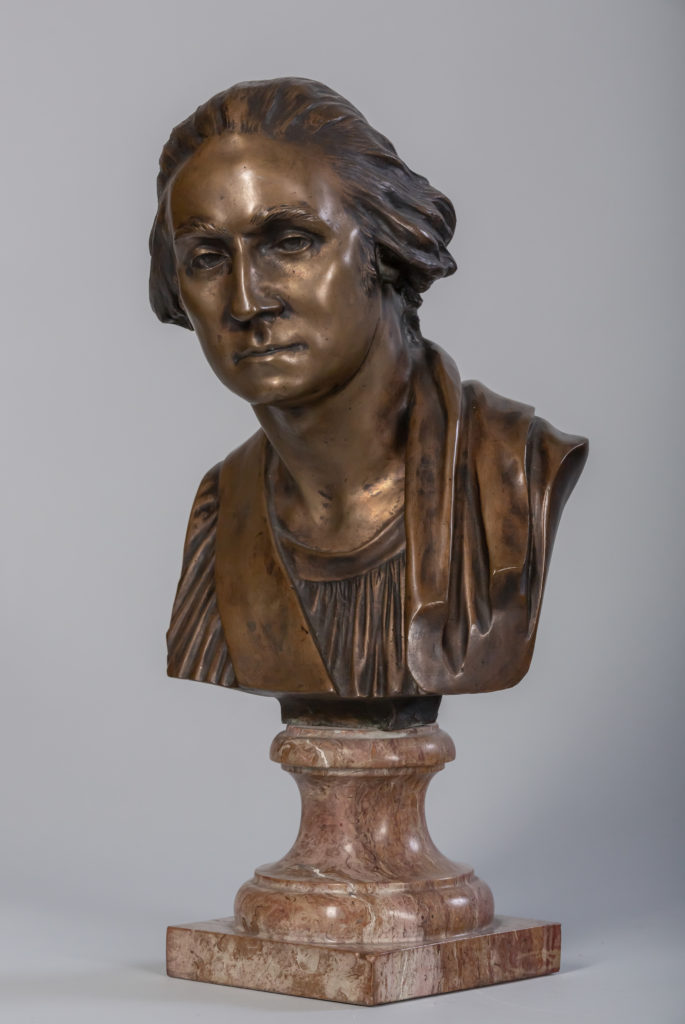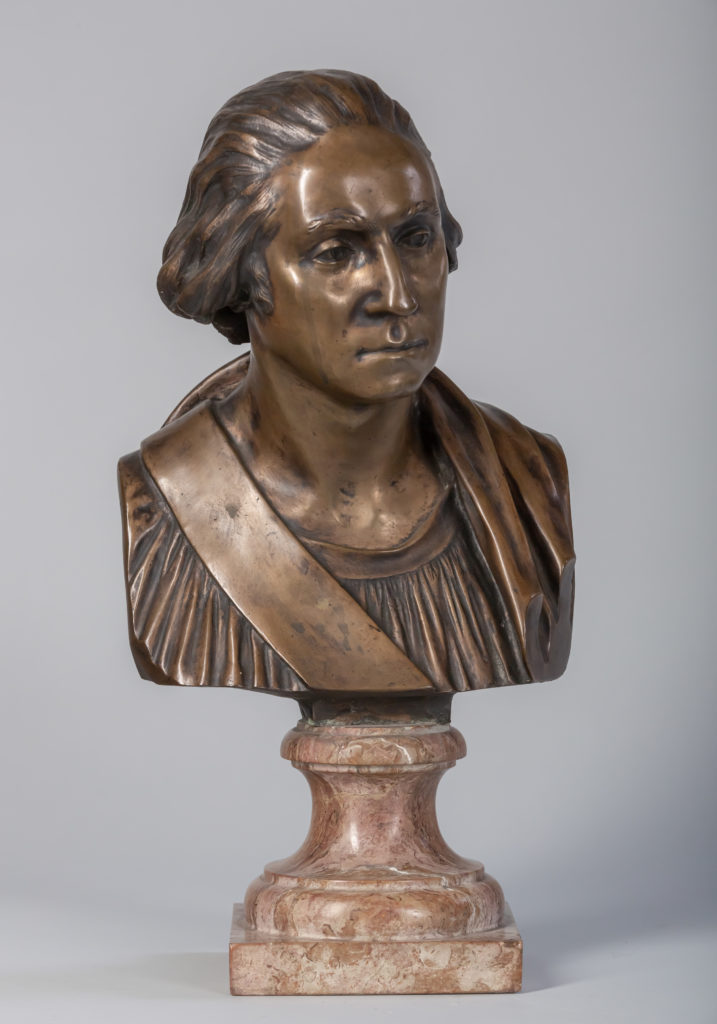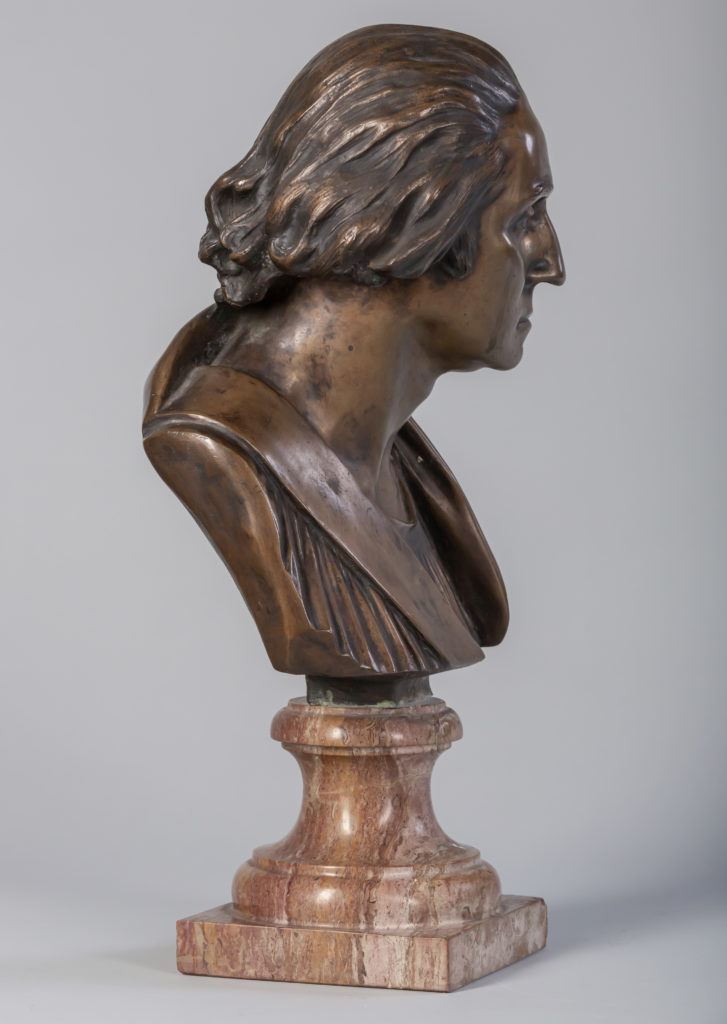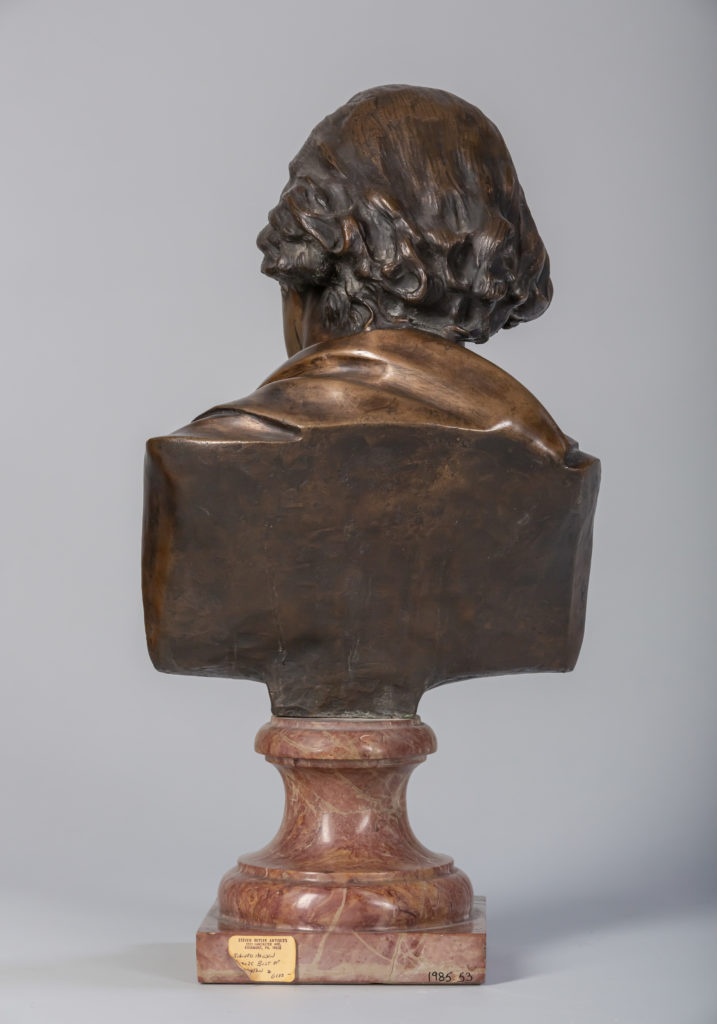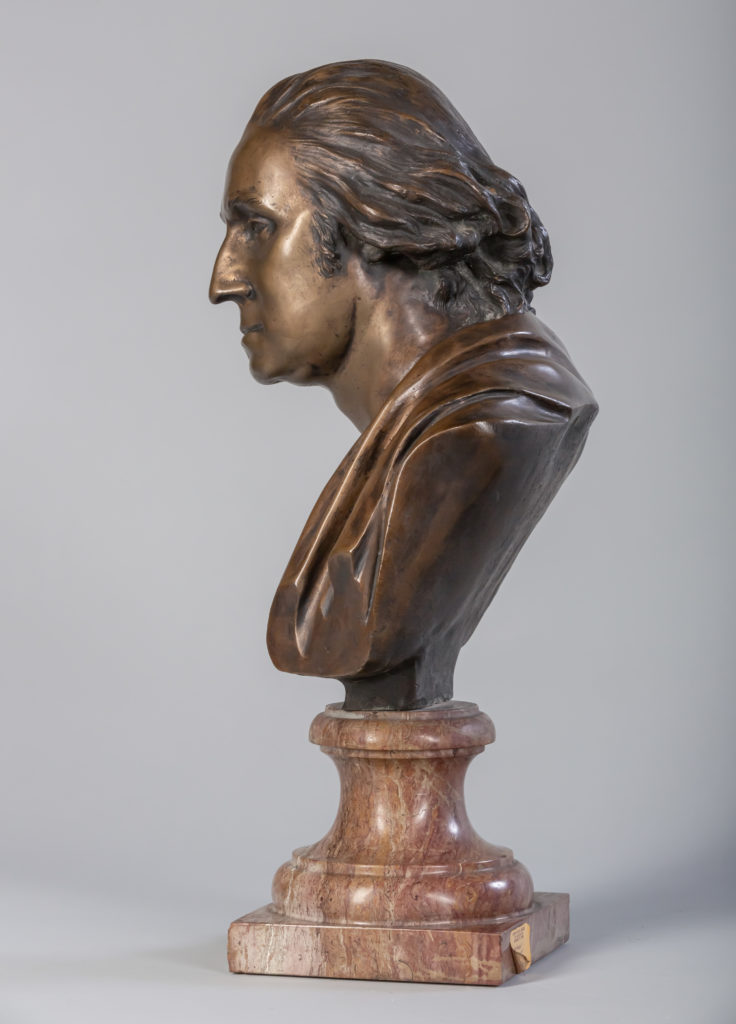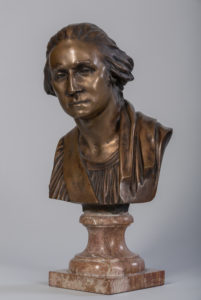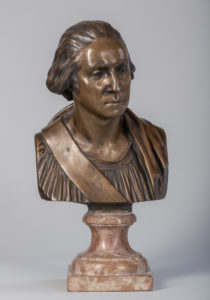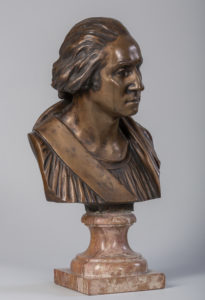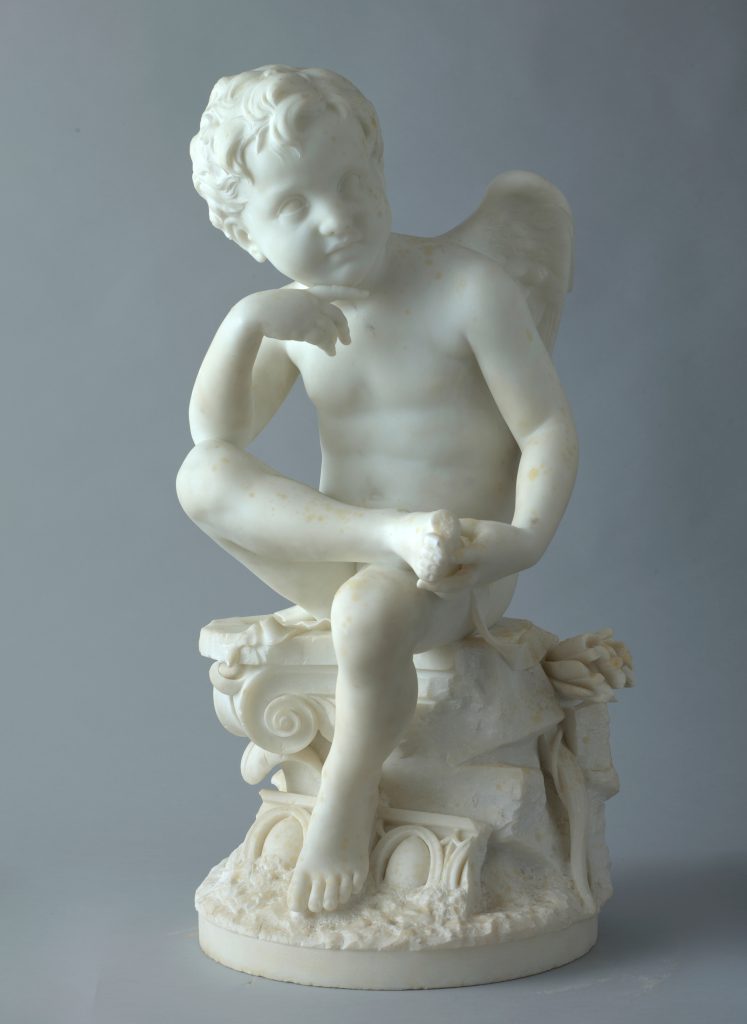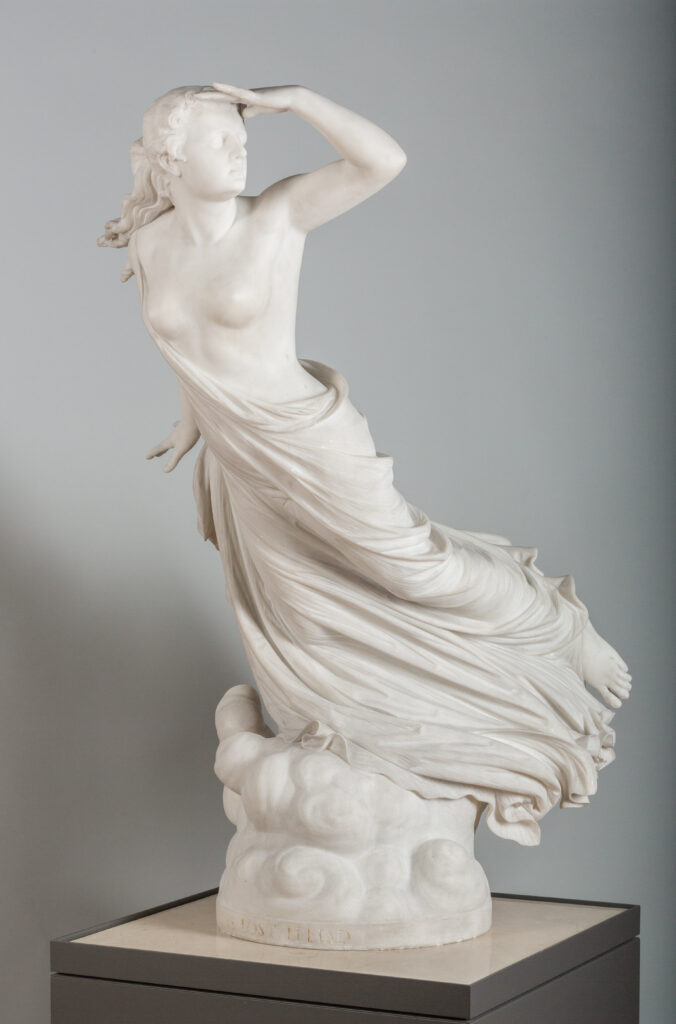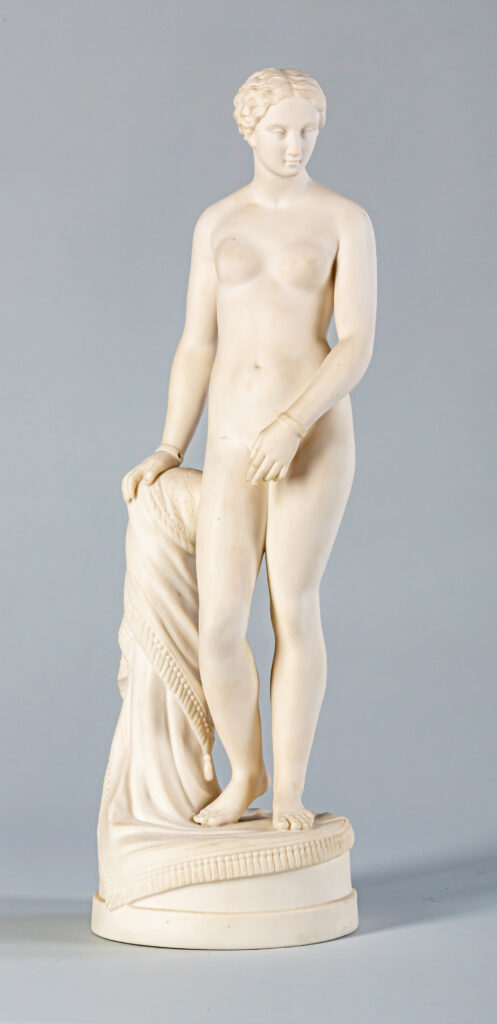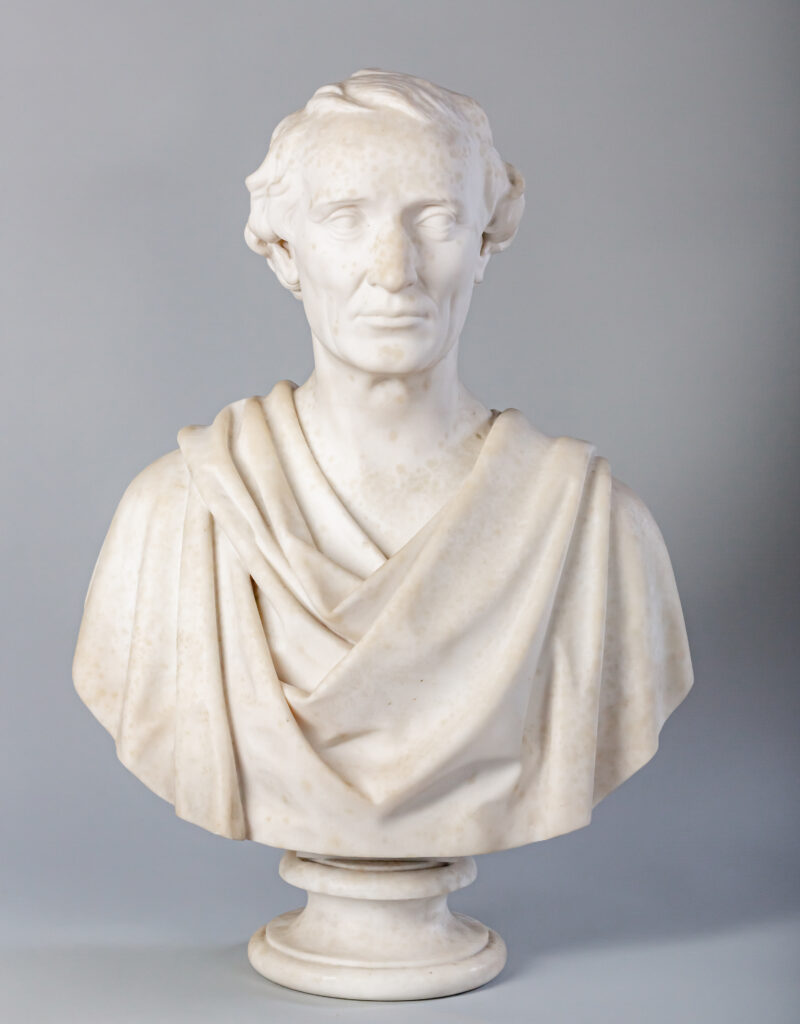George Washington
Portland Museum of Art, Anonymous Gift
This bronze bust of Washington demonstrates the deep influence of classicism in early American portraiture, on view more subtly in the portrait of Thomas Jefferson by Gilbert Stuart. It also illustrates the degree to American classicism was inspired by contemporary European culture. In 1784, the Virginia General Assembly voted in favor of commissioning a statue of General George Washington for the Virginia State House. The resolution dictated a sculpture “of the finest marble and the best workmanship,” and was understood to require the work of a European sculptor. Thomas Jefferson, then minister to France, was given the task of identifying the sculptor. The choice was an easy one, as French neoclassical sculptor Jean Antoine Houdon was widely recognized as Europes leading sculptor. Jefferson, writing to Governor Harrison of Virginia in 1785 indicated that “[t]here could be no question raised as to the Sculptor who should be employed; the reputation of Monday. Houdon, of this city [Paris], being unrivalled in Europe.”
Houdon took up the commission with gusto and travelled to America in 1788 to take Washington’s likeness. The bust Houdon modeled at Mount Vernon and life-mask he created are among the most accurate depictions of Washington made during his lifetime, and provided models for generations of later artists (including Horatio Greenough, who procurred a copy of the bust to complete his own commission of 1832). This bronze bust is based on a terracotta original modeled at Mount Vernon and now in the Louvre. It depicts the General in the guise of a Roman soldier, with a
During the execution of the statue, which was not completed until 1790 or 1791, considerable debate over how to depict the famous general involved Jefferson, Houdon, Benjamin Franklin, preeminent American painter Benjamin West, and, eventually, Washington himself. Houdon evidently originally conceived of the statue as showing Washington in classical guise, either as a Roman general or farmer, in keeping with his reputation as the American Cincinattus after the victorious Roman general who returned to his farm instead of taking up the reigns of power in the 5th c. BCE. In 1786 Washington wrote to Jefferson that, while no expert in sculpture, “perhaps a servile adherence to the garb of antiquity might not be altogether so expedient as some little deviation in favor of modern costume.” In indicating his preference for contemporary clothing, Washington alluded to West’s paintings, and his intervention ultimately decided the matter in favor of contemporary clothing that alluded to his military service. However, like the Portrait of Jefferson by Gilbert Stuart, subtle and overt references to antiquity were worked into the pose and accoutrements of the final statue.
